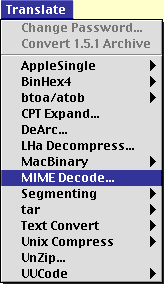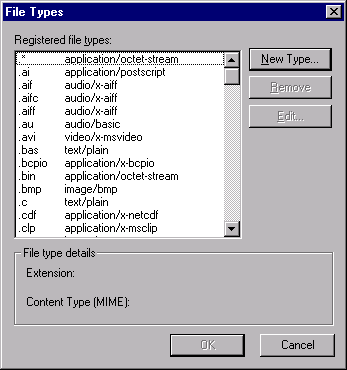What is MIME?
by Dr. Alex Yu
"I sent an e-mail with an attached file to my co-worker at the University of Oklahoma, but he cannot read my file. The system says the file is encoded with MIME."
"I uploaded a Shockwave movie to my Web server, but I cannot see it in a Web browser even though I have installed the Shockwave plug-in"
MIME as an Internet Protocol
Are you familiar with these scenarios? What is MIME anyway? How can my friend, using another e-mail system, read my file? How can my Web clients look at my multimedia presentations on the Web such as Flash, Shockwave, and QuickTime?
MIME stands for Multi-purpose Internet Mail Extensions or Multimedia Internet Mail Extensions . It is a encoding protocol like BinHex in Mac and UUEncode in UNIX. At first it was used as a way of sending more than just text via email. Later the protocol was extended to manage file typing by Web servers.
Email attachment
Let's talk about email first. By using MIME, you can enclose the following types of binary file to your text-based e-mail message:
- character sets other than ASCII
- enriched text
- images
- sounds
- other messages (reliably encapsulated)
- tar files
- PostScript
- FTPable file pointers
The easiest way to send and receive MIME attachment is to use a MIME-aware Email client such as Netscape Mail or Microsoft Outlook. The procedure is self-explanatory. When a MIME ready e-mail system receives a MIME encoded file, the binary file should show up as an attachment and the proper software in your computer should be capable of reading the file. For example, if the attached file is a PostScript file, your LaserWriter Utilities should be able to download it to the printer. If the file is a graphic, DeBabelizer or PhotoShop should be able to open the file.
However, you must pay attention to the file extension. For instance, if someone sends you a JPEG image from a Mac with an extension as "JPEG," you would not be able to open it in a PC unless you change the extension to "JPG," and vice versa.
 |
However, if you use a non-MIME ready e-mail package, the MIME attachment would appear to be scrambled ASCII characters. To extract the file, you need to export the message to a file and use a MIME decoder such as Stuffit Deluxe to convert the file. |
If you want to attach a text-file only, it is advisable to copy and paste the file into the message area of your e-mail rather than asking your friend to use a MIME decoder.
On the Web
Usually most Web servers are pre-configured to handle most of the popular MIME types. Problems arise when you have your own Web Server. If certain file types cannot be displayed on the Web or downloaded from the server, you have to edit the MIME type in the server. For example, if you use Microsoft Internet Information Server, the procedures to add MIME types are as the following:
- Go to Start/Microsoft Internet Information Server.
- Choose Internet Server Manager to invoke Microsoft Management Console.
- Click the plus sign next to Internet Information Server to reveal the Web server volume .
- Right click the volume to choose Properties. On the Properties click the File Type button.

- Click the New Type button to enter a new MIME type.
